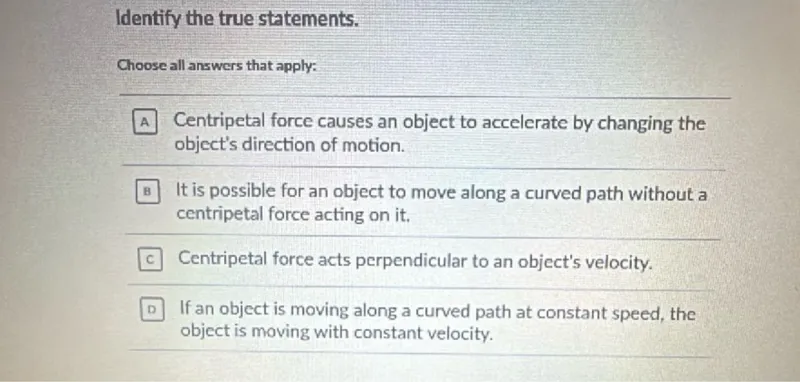Questions: Identify the true statements. Choose all answers that apply: A Centripetal force causes an object to accelerate by changing the object's direction of motion. B It is possible for an object to move along a curved path without a centripetal force acting on it. C Centripetal force acts perpendicular to an object's velocity. D If an object is moving along a curved path at constant speed, the object is moving with constant velocity.

Transcript text: Identify the true statements.
Choose all answers that apply:
A Centripetal force causes an object to accelerate by changing the object's direction of motion.
B It is possible for an object to move along a curved path without a centripetal force acting on it.
C Centripetal force acts perpendicular to an object's velocity.
D If an object is moving along a curved path at constant speed, the object is moving with constant velocity.





